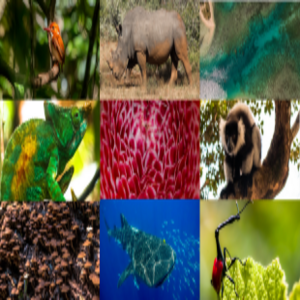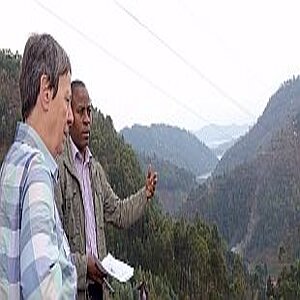Conserving Rwanda's mountain rainforest
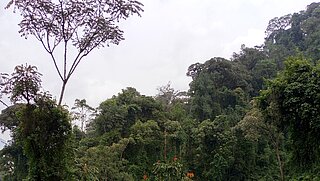
The IKI supports the transition to sustainable agroforestry in the Cyamudongo rainforest area.
Endangered biodiversity
International experts agree that Rwanda is considered a hotspot of biodiversity. An incredible variety and diversity of flora and fauna exists notably in Nyungwe National Park, the largest mountain rainforest in East Africa, and the patch of forest located in the park, the Cyamudongo Forest.
However, the rising population growth in Rwanda is increasing pressure on land use in areas of pristine nature. Forests are being cut down to produce firewood. Soil erosion and local changes in climate are having a negative impact on agricultural production.
Education to conserve biodiversity
The University of Koblenz has been researching the complex interrelationships between the forest and the adjacent areas in Rwanda for many years, and has implemented measures to protect the ecosystem. The researchers work closely with the various stakeholders in Rwanda, and involve the local population.
Farmers in the peripheral zones of the national park were made aware of the methods of ecologically sustainable agriculture, and trained in agroforestry techniques within the ‘Cyamudongo Project’, which is funded by the International Climate Initiative (IKI). The measures contribute to assuring food security and an energy supply, while also reducing the pressures of land use on the forest.
Making biodiversity visible
"We can only protect and preserve what we know," explains Prof. Dr Eberhard Fischer, who is leading the project with Siegmar Seidel (both from the University of Koblenz). The correct management of sensitive biotopes like the Cyamudongo Forest is an important building block for the protection of global biodiversity. The national park staff and environmental authorities in Rwanda provide training to students as part of the project. The programmes to communicate knowledge about the flora and fauna of the national park and how to monitor vegetation and anthropogenic influences have been very successful.

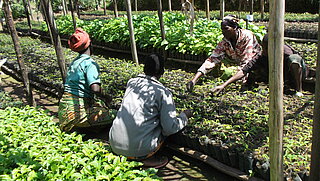
Changes in species composition were recorded and documented twice annually from 2017-2021 at specific observation sites to demonstrate the importance of the forest for biodiversity and the need for protection. The study identified a total of 336 plant species, five of which were found exclusively in Rwanda and 16 others in Rwanda, but only in the Cyamudongo. These endemic species, i.e. species that only occur in one site or region, are particularly relevant when evaluating the Cyamudongo Forest as a refuge for rare species. A further 10 plant species were recorded for the first time in Rwanda.
In collaboration with the University of Rwanda, the project supervised the doctoral theses of two Rwandan scientists and assisted them with logistics and scholarships: while Aimable Nsanzurwimo's work studied the vegetation of the forest in relation to anthropogenic influences, Concorde Nsengumuremyi researched the influence of different tree species in agroforestry systems on CO2 fixation and biodiversity in the marginal zones of the Cyamudongo Forest.
Technical support of the Tree Seed Centre and close cooperation between the universities
The project provided two years of technical support and staff training to the national Tree Seed Centre with its headquarters in Butare/Huye. One focus was to define processes to distribute forest seeds. The programme was rounded off by practical workshops in plant identification, grafting techniques and training in nursery establishment and management.
The collaboration between the University of Koblenz and the University of Rwanda has enabled two employees of the Tree Seed Centre to study at both universities as master’s degree students.
Student trips to the ‘Arboretum of Ruhande’ were also organised, and student interns at the Seed Centre participated in the project work. The students mapped the vegetation of the arboretum, for example, and were therefore able to consolidate their knowledge of botany. The mapping results are published online as an interactive map which is constantly being updated.
Agroforestry systems for sustainable land use
Cultivated areas in Rwanda are often located on slopes and are at risk from soil erosion during torrential rain. The establishment of agroforestry systems, i.e. the integration of trees and hedges into the agricultural land, is a proven method of stabilising the soil and for producing livestock feed and firewood on the fields alongside the cultivated crops. This optimisation of land use contributes to environmental protection by promoting microhabitats for local biodiversity while increasing biomass production. The project uses these findings and has established an agroforestry belt around the Cyamudongo Forest and an agroforest corridor to the Nyungwe Forest 10 kilometres away.
A total of 6,385 hectares of agroforestry area and 50 hectares of semi-natural small forests were created over the period of the project. In practical terms, this means that roughly 1.57 million tree seedlings were planted in cooperation with the local population, which also contribute to global climate protection as carbon reservoirs.
Over 13,000 farmers were trained locally on basic agroforestry topics to increase acceptance by the population of near-natural agroforestry and to implement the measures in a sustainable process. The participants learned about all the tree species and the various ways of controlling soil erosion.
The project works closely with local authorities up to village level to permanently embed the knowledge and activities.
Since early 2022, two tree nurseries established by the project have also been continued by former employees under private responsibility. This will enable the people to continue to acquire native and locally adapted tree seedlings, even after the end of the project.
Overall, the project has contributed to a significant improvement in the economic situation at the edge of the rainforest in a remote region in south western Rwanda. The project has provided an income for over 3,280 people.
Outlook
The IKI project shows that the conservation of biodiversity, forests and of agricultural production go hand in hand and, at the same time, contribute to the protection of the climate and natural resources.
And it also demonstrated how crucially important it is to implement the projects with the local population, because acceptance, motivation and the active support of communities are basic prerequisites for the conservation of forest areas, which ultimately benefits everyone - locally, regionally and globally.
The link has been copied to the clipboard
Contact
IKI Office
Zukunft – Umwelt – Gesellschaft (ZUG) gGmbH
Stresemannstraße 69-71
10963 Berlin
A voice from the project
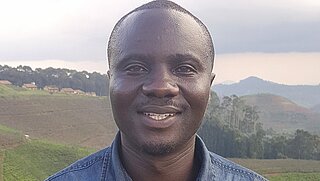
"In the IKI project at the University of Koblenz, I acquired new skills in the development and management of research projects. This has opened the door for me to a senior position as Deputy Director for Academics and Trainings at the Integrated Polytechnic Regional College."
Dr Concorde Nsengumuremyi, former PhD student in the project
Facts & Figures
By March 2022, a total of 95 national park staff and 88 students or public authority and university staff had taken part in training courses and excursions to the Cyamudongo Forest, thereby expanding their knowledge of the protection of local biodiversity.



